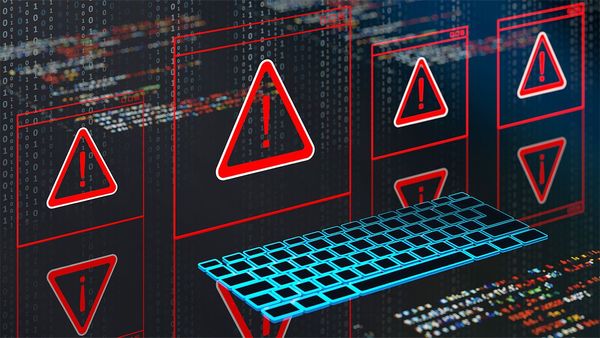Capital One stock and its consumer finance peers have climbed into the market's top tier on benign credit metrics and hopes that the economy will avoid recession. But the moment of truth may have arrived Friday, with the Supreme Court ruling striking down President Biden's student loan forgiveness program.
As the three-year student loan payment holiday nears an end, the demise of Biden's $400-billion giveaway may provide something of a reality check for lenders.
COF, SoFi React To Supreme Court Ruling
After the ruling, the S&P 500 climbed 1% to 4440 in Friday stock market action. That put it on track for the highest close since April 2022. A cooler-than-expected inflation reading initially gave the broad market, as well as financial stocks, a lift.
But the ruling created some volatility for consumer lending stocks. Capital One, after rallying more than 1% in early morning trade, reversed to a 0.1% decline. SoFi Technologies jumped about 6% on optimism over its student-loan refinance opportunity. But investors sold on the good news and SOFI stock traded down 2.7% around noon. OneMain Holdings, which lends to nonprime customers, also saw modest losses after a strong open.
SLM, most of whose private student loan customers also hold federal student loans, slipped 0.8%.
Still, the overall muted reaction suggests that the ruling was hardly a surprise. But the implications will take some time to hit home.
Capital One: Credit Metrics 'Not As Good As It Appears'
"The consumer is in a really strong place," Capital One CEO Richard Fairbank told a Morgan Stanley investor conference on June 13. "Many consumers still have savings that came from the pandemic. The debt burdens are at historically low levels and, of course, unemployment is breathtakingly low."
Yet, Fairbank acknowledged, the credit metrics that consumer lenders are seeing — elevated credit scores, and low delinquencies and defaults — are "not as good as it appears."
A New York Fed study estimated that student loan borrowers saw $195 billion worth of payments waived in the first two years of the moratorium. That sum has now likely grown to more than $300 billion.
The government's pandemic-era interventions have made it "more difficult to get reliable credit reads on consumers," Fairbank said. Federal income supports have contributed to "a phenomenon that we call FICO drift."
FICO credit scores have "unmistakably moved to better territory," but only temporarily. As a result, lenders can't totally trust their models that predict loan repayment rates, he said.
End To Student Loan Payment Moratorium
Now the fog is set to lift as the last major pandemic income-support program comes to an end. Interest on federal student loans will start accumulating on Sept. 1. Loan payments, suspended since April 2020, will come due in October.
The moratorium has paused payments on $1.3 trillion in student loans with a median balance of $18,773. Deutsche Bank estimates that a resumption of student loan payments will cost consumers $14 billion per month. That amounts to an average $305 per borrower, analysts Gabriella Carbone and Krisztina Katai wrote on June 21.
"If students are going to have to resume their payments, I think that will have an effect on credit card and other consumer performance," Fairbank said. "I'm not sure that I'd put it in the category of a huge effect, but maybe for some of those individuals it could be."
Supreme Court Student Loan Forgiveness Ruling
The effect will be more forceful because the Supreme Court ruled against the constitutionality of $400 billion in student loan forgiveness. The conservative-dominated court has shown little patience for government agencies adopting consequential policies without the explicit consent of Congress. The outcome of Biden v. Nebraska, therefore, hinged on the issue of standing to sue. The Supreme Court, in a 6-3 ruling, found that Missouri finances would suffer because state-created student-loan servicer MOHELA stood to lose revenue due to debt cancellation.
The White House had said that its student-loan forgiveness program would fully erase student debt for about 20 million borrowers. About 60% of the 43 million eligible for debt reduction have received Pell Grants, which made them eligible to have $20,000 in student debt erased. Other borrowers could have had up to $10,000 of their student debt canceled. Eligibility extended to those earning up to $125,000 per year, or $250,000 for couples.
Spending Hit From End To Student Loan Holiday
Above-average earners hold about two-thirds of student debt. These borrowers with a higher capacity to spend likely took advantage of the student loan holiday to go on trips and make more discretionary purchases, Oppenheimer analyst Dominick Gabriele told IBD.
"I think you're going to see a further decline in discretionary spending, with some smaller portion of those folks actually seeing credit impact with their ability to pay their credit card debt," Gabriele said.
Goldman Sachs estimates that the economic hit from the resumption of student loan payments would roughly double if the Supreme Court struck down loan forgiveness. Goldman economists forecast a drag on personal consumption spending of six-tenths of a percentage point per month in the last four months of 2023.
Credit Card Delinquencies Already Rising
Even before the payments resume, Deutsche Bank has noted a "sharp rise in credit card delinquency rates." Delinquencies jumped from 1.5% in the third quarter of 2022 to 2.4% in the latest quarter. That's still below the 3% range that prevailed before the pandemic and far below the peak of around 6% triggered by the 2008 financial crisis.
Yet New York Fed data shows that delinquencies have already climbed to pre-pandemic levels for borrowers under age 40, who hold the bulk of student debt.
"We're seeing the normalization happen as people run out of their excess savings," Gabriele said. "The biggest question: Is this really just normalization back to 2019 levels?" If unemployment heads significantly higher, Gabriele expects the credit environment to become more severe than it was pre-pandemic.
Jefferies analyst John Hecht tells IBD that consumer finance executives have eyed the end of the student loan payment holiday as "a potentially pivotal moment." The breadth of student-loan borrowers gives the resumption of student loan payments potentially systemic implications.
"There is going to be some level of credit deterioration," Hecht said. But he expects it will stop short of being "a game changer."
That may sound reassuring, but here's some key context. "Most of the analyst community has been forecasting some degree of recession in our forward numbers anyway," Hecht said.
Bracing For Loan Losses
If there's good news, it's that Capital One and other credit card lenders have proactively taken provisions for loan losses.
"They've provisioned for something around 5% unemployment" vs. 3.7% currently, Hecht said. If the unemployment rate peaks below 5%, that implies upside relative to earnings estimates for the likes of Capital One, he said. Unemployment between 5% and 6% would be more neutral for earnings, while a jobless rate north of 6% would be more negative.
Capital One Chases Growth — Selectively
Ahead of the resumption of student loan payments, consumer spending has already slowed. Retail sales slipped 0.1% in the three months through May vs. the prior three months, on a seasonally adjusted basis.
"Spend per customer is really flattening out," Fairbank said. "Growth that you see in Capital One spend is really driven by a lot of traction in new originations."
The new business reflects Capital One's efforts to expand its customer base, with an emphasis on higher-income tiers. That's in keeping with its recent acquisition of Velocity Black, a digital concierge for arranging travel, entertainment, shopping and dining.
SoFi's Refinance Opportunity
SoFi, with its focus on personal finance and refinancing, is seen as a clear winner from the end to the student loan payment moratorium. CFO Chris Lapointe told the Morgan Stanley investor conference that SoFi has a "huge opportunity" ahead. "The need to help our student loan borrowers is at an all time high."
One path for refinancing allows borrowers to extend the term of their loan from the usual 10 years out to 20 years. That could shrink a $775 monthly payment down to $500, he said.
On Thursday, JPMorgan analyst Reginald Smith reiterated a neutral rating and 6 price target for SoFi stock, citing a 60% rally over the past month. He also pushed back against SoFi's forecast of the multiyear student-loan refinance opportunity at around $200 billion. JPMorgan's Smith sees $90 billion as more likely.
The scale of the opportunity partly depends on the Supreme Court ruling. If the Biden administration can erase $400 billion in student debt, the need for refinancing will shrink. The ruling on debt forgiveness also has major implications for Biden's proposed income-driven repayment proposal that could cost the government another $250 billion.
Under the plan, student loan borrowers would have to pay no more than 5% of income above about $33,000 per year, down from 10% under current law. Loans refinanced with SoFi are no longer eligible for flexible federal payment plans.
Student Loan Forgiveness Impact On SLM?
Private student loans issued by SLM weren't eligible for forgiveness and long-ago resumed repayment. Still, the end of the federal loan moratorium and Supreme Court case may have an impact on SLM.
Sweeping relief for holders of federal student loans via forgiveness and generous income-driven repayment terms could have led more borrowers to spurn private student debt, Hecht said.
On the other hand, federal debt relief could have supported the creditworthiness of SLM loan holders. That's because 86% of SLM borrowers also have a federal loan.
COF, Consumer Lending Stocks
A 12% climb so far in June lifted IBD's Finance-Consumer Loans industry group to a No. 13 ranking among IBD's 197 industry groups. While SoFi stock has rallied past a buy zone, a number of other stocks are close to buy range, including COF stock, OMF, SLM and Enova International.
Still, Oppenheimer's Gabriele thinks it's too early to get constructive on consumer lending. "It's tough to get really strongly behind these names for them to break out if people think we're going to see an impending credit cycle," Gabriele said.
His firm has "the lowest percentage of outperforms we've ever had" on consumer lending stocks.
Hecht says he's bullish on nonprime lender OneMain, citing strong management and a good dividend yield. OMF shares currently yield 9.2%, vs. 2.2% for CapitalOne and 2.7% for SLM.







